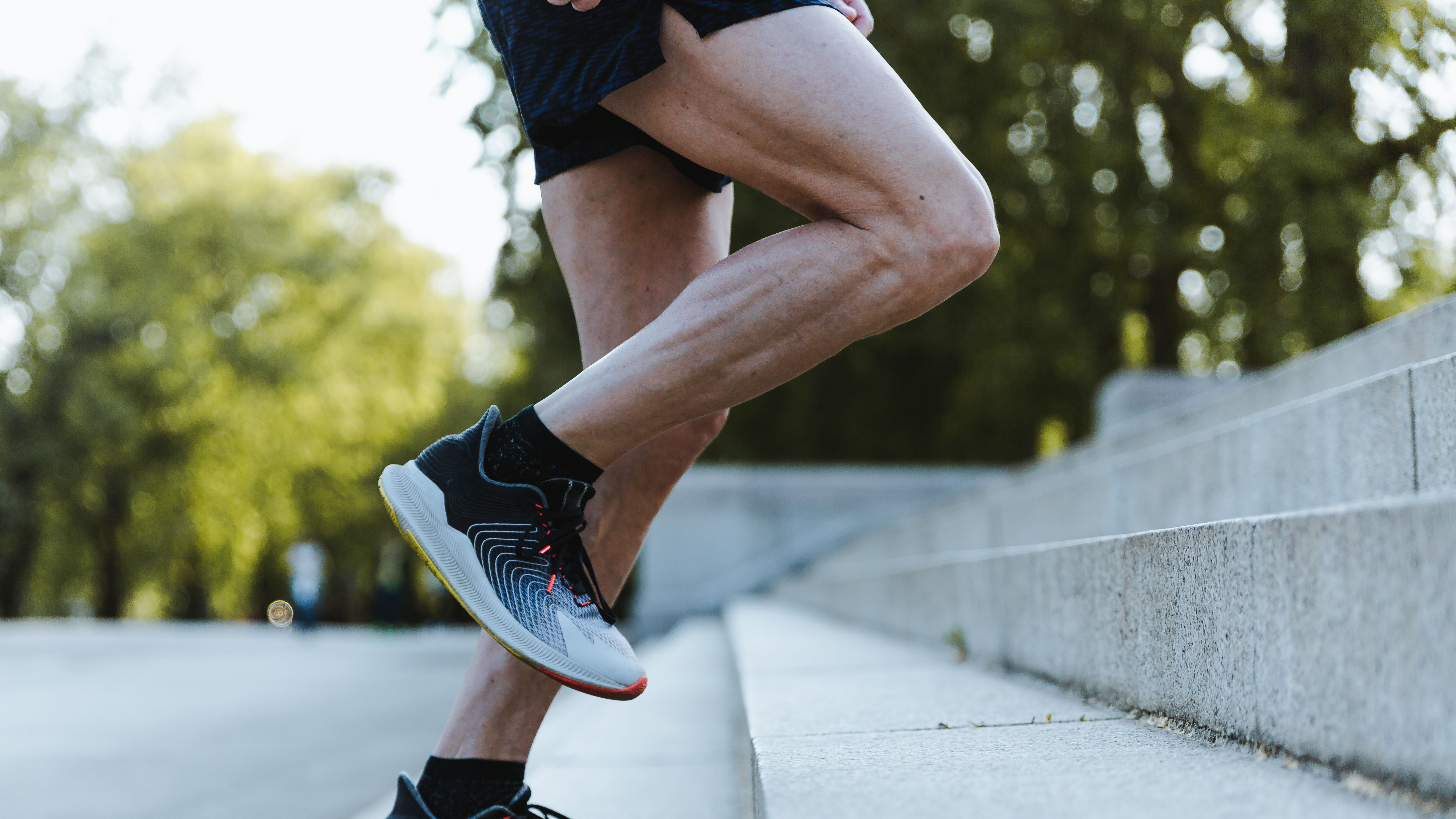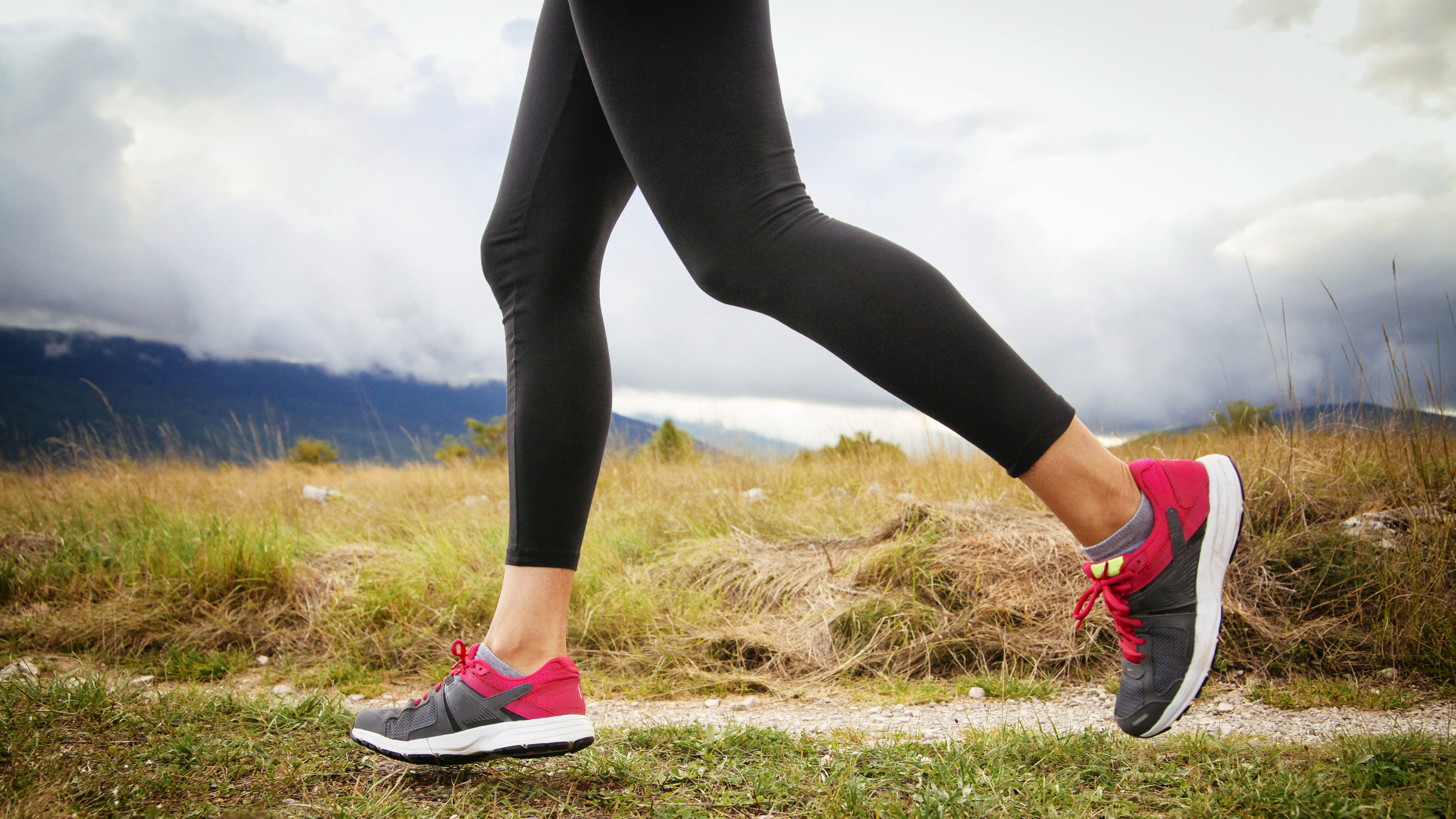Is running bad for your knees?
Is running bad for your knees? Evidence suggests that runners are actually less likely to get osteoarthritis – here's why

You’ve taken up running, downloaded Strava and you’re heading out a few times a week – but you’re already wondering, is running bad for your knees? It's a common concern, but most evidence suggests that it's largely beneficial for the joints.
Multiple studies have shown that runners are less likely to have osteoarthritis than non-runners – the irreversible wearing away of knee cartilage – and some researchers believe that running actually conditions your cartilage to be more resilient.
We spoke with Dr. Helen O'Leary, a physiotherapist and the director of Complete Pilates, to discuss how running can affect these joints.
Want more tips on running technique? Have a read through our guides to how to run properly and correct foot placement.
Will joint impact damage knees?
One of the main reasons that people think running is bad for your knees is because of the pressure – or load – it places on the joints. Interestingly, the overall 'force exertion' for walking and running might be equal over similar distances.
A small study published in Medicine and Science in Sports and Exercise showed the reason for this. In the study, Canadian researchers asked 14 adults to walk or run on a moving platform that captured data on the amount of force, or load, each step had. Results showed that the force exerted on the knees while running was as much as three times higher than while walking – but this was offset by the time runners spent in the air and the length of their stride. The overall force exerted on the knees when running or walking over the same distance was fairly similar.
And while the joint impact caused by running has long been a concern, it has never been shown to increase the risk of knee osteoarthritis. In fact, multiple studies have shown that runners are less likely to develop osteoarthritis than non-runners.
Get the world’s most fascinating discoveries delivered straight to your inbox.
For most, running is not bad for our knees at all. It’s quite the opposite and can actually strengthen them, says O’Leary.
“Every time we run we put up to three times our body weight through each leg,” says O’Leary. “Most of us cannot single-leg squat or leg press that amount of weight, so the fact that we’re doing that means all the bigger muscles in your legs, hips and torso have to adapt and get stronger to account for the increased force, which means that you’re in a better position to support your joints anyway.”
- Related: How running changes your body

Runners have a lower rate of osteoarthritis
There's plenty of evidence that suggests runners are less likely to get arthritis. A 2018 piece published in the Journal of Bone and Joint Surgery showed the arthritis rate of active marathoners was well below that of the general U.S. And another 2018 study published in Clinical Rheumatology found that patients with osteoarthritis experienced less pain if they ran regularly.
There are various theories for why this is the case. Researchers who published a study in the journal of Medicine & Science in Sports & Exercise suggested that runner's have a lower risk of developing a bad case of osteoarthritis because of their lower BMI.
Other researchers, publishing their study in the Exercise and Sport Sciences Reviews, suggested that running actually conditions cartilage to withstand mechanical stress.
And a (very small) 2016 study, published in the European Journal of Applied Physiology, found that running positively changed the interior environment of the knee – reducing inflammation along with some other markers of arthritis.
More research needs to be done here, but it seems that running has a protective, beneficial effect on knee joints, rather than a detrimental one.
What causes runner's knee problems
While you're much less likely to develop osteoarthritis in the long term, there are some other injuries that are common in runners.
Patellofemoral pain syndrome – sometimes simply referred to as runner's knee – is pain that's localized around the kneecap. This can occur when your kneecap isn't correctly aligning with the groove in your joint. Common causes for this issue are weak thigh muscles or repetitive movements – basically, if you're running too much and not doing enough strength training.
"I really believe that most injuries happen because we haven’t given the body time to adapt and change to the new demands. You need to give your body time to get stronger,” says O’Leary. “You can most certainly run without injury; you just have to know your limits. Doing a plan like the Couch to 5K is great if you want to know how to start running."
“It’s also always worth doing some strength training and not just running,'' says O’Leary. “This will give our body resilience in our normal life as well. I’m not saying that you have to suddenly start doing heavy weights but doing exercises such as calf raises (ideally single leg), a raised heel bridge (single leg and double leg), wall sits, goblet squats, and planks (to name a few) will help support your joints and help avoid injury.”

What shall I do if I feel pain?
If you have knee pain while running, it’s important to take a look at your footwear. O’Leary suggests going to a running shop for a fitting and gait analysis, so an expert can make sure you’re running in the right size.
"You’ll generally need to always go a size up," she says. "And get the right shoes for your gait, foot shape and terrain – off-road, road or track running.
“If there’s still pain then that’s your cue to find out why. Is there a structural problem causing this pain and will it make it worse if you run through it? At this point, I would recommend a physio assessment and perhaps an ultrasound scan. This gives you a real-time idea of what is happening in your body and if there’s any swelling or inflammation around the knees.”
O’Leary also suggests that you don’t change your running style to account for any knee pain either, as this will often have effects elsewhere, and she advises including strength training in your weekly exercise plan.
If it's severe pain, then you may also need to rest it and recover properly before running again.
How can I strengthen my knees?
There are exercises you can easily do at home to help you strengthen your knees, advises O’Leary.
“The important thing to remember is that you need to strengthen your quads and calves as well as hamstrings and glutes. Exercises like Bulgarian split squats and reverse Nordic curls are great as well as single calf raises. Our calves provide us with a big chunk of the force we need to move, so they need to be strong and resilient.”
We'd recommend picking up one of the best resistance bands if you're looking for a simple way to strengthen your muscles at home.
How else can I protect my joints?
"I suggest warming up and activating the muscles and joints with dynamic stretching,” says O’Leary. “Start with a brisk walk for around 4-5 minutes to increase your heart rate and get all your muscles firing. Then why not try something like a McConnel squat (6-8 on each leg) and then calf swap overs (lean against something and switch between legs, walking yourself out into a diagonal plank before coming back up again). This will get your calves moving and activate them to help you produce force to move forwards.”
And the conclusion is …
Running is free, accessible and easy to do. And, according to an American Journal of Preventive Medicine study, which observed runners prospectively over time, it won’t increase your risk of knee problems.
You do, however, need to take the right precautions and follow a progressive running plan, always wear the correct shoes and add strength training to your repertoire.
“And, if you’re doing everything right and still experience knee pain, take action immediately. If something hurts, stop, rest and ice the pain,” says O’Leary. "The first time it happens, you can write it off as just a little soreness. But the second or third time, you may need to see your GP or seek expert advice.”
Bibliography
Why Don’t Most Runners Get Knee Osteoarthritis? A Case for Per-Unit-Distance Loads, Medicine and Science in Sports and Exercise (2013)
Long distance running and knee osteoarthritis. A prospective study, American Journal of Preventive Medicine (2008)
Low Prevalence of Hip and Knee Arthritis in Active Marathon Runners, Journal of Bone and Joint Surgery (2018)
Effects of running and walking on osteoarthritis and hip replacement risk, Medicine & Science in Sports & Exercise (2013)
Joint Loading in Runners Does Not Initiate Knee Osteoarthritis, Exercise and Sport Sciences Reviews (2017)
Running decreases knee intra-articular cytokine and cartilage oligomeric matrix concentrations: a pilot study, European Journal of Applied Physiology (2016)
Long Distance Running and Knee Osteoarthritis A Prospective Study, American Journal of Preventive Medicine (2009)
Running does not increase symptoms or structural progression in people with knee osteoarthritis: data from the osteoarthritis initiative, Clinical Rheumatology (2018)
Lucy Miller is a Journalist, Level 3 Personal Trainer, Nutritional Advisor and Children’s Fitness Specialist. She holds fitness qualifications from NASM Training and Premier Training International and been a fitness journalist and model for over 20 years.
Since going freelance in 2014, Lucy left Men’s Fitness Magazine to write for an abundance of top consumer titles such as Women’s Health, Women’s Fitness, Glamour, Top Sante, The Guardian and Runners World. She’s also extremely passionate when it comes to educating others about health and physical activity and loves inspiring and working with children and adults to help make fitness fun, sustainable and accessible.
In her spare time, Lucy is ever the sportswoman. Once a national gymnast, having won three national titles, she has also run a handful of marathons around the world and loves to test her physical and metal side with regular running and gym sessions, not to mention ballet, bootcamp, boxing and TRX.



